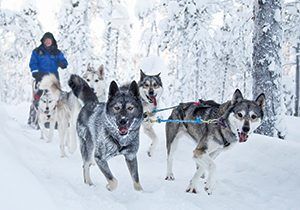
Spotted Lake: Geography primary resource
Explore how natural geographical processes can change the look of the landscape
This primary resource introduces children to the way that natural geographical processes; such as the water cycle, can change the look of the landscape. Why is the lake a mix of different coloured puddles? What does the spotted lake look like during the spring? Which minerals are present in the water?
Pupils will learn about how the change in weather across the seasons affects the state of the water, and therefore the look of the lake in our National Geographic Kids’ Geography primary resource sheet.
The teaching resource can be used in study group tasks for discussing the links between the water cycle and the landscape of Spotted Lake; as a printed handout for each pupil to review and annotate, or for display on the interactive whiteboard using the images included in the resource for class discussion.
Activity: Ask children to copy the diagrams at the bottom of the resource onto a large piece of paper, title each diagram with the time of year they believe is being shown, and label the water with what state it is in, and what is happening in that image. Pupils could discuss, as a class what they know about the water cycle and connect it to the visuals that they can see in the resource. Can they think of any other landscape that changes over the course of a year due to the water cycle?
N.B. The following information for mapping the resource documents to the school curriculum is specifically tailored to the English National Curriculum and Scottish Curriculum for Excellence. We are currently working to bring specifically tailored curriculum resource links for our other territories; including South Africa, Australia and New Zealand. If you have any queries about our upcoming curriculum resource links, please email: schools@ngkids.co.uk
This Geography primary resource assists with teaching the following Geography objectives from the National Curriculum:
- The national curriculum for geography aims to ensure that all pupils: understand the processes that give rise to key physical and human geographical features of the world, how these are interdependent and how they bring about spatial variation and change over time
National Curriculum Key Stage 1 Geography objective:
Pupils should be taught to:
- identify seasonal and daily weather patterns in the United Kingdom and the location of hot and cold areas of the world in relation to the Equator and the North and South Poles
- use basic geographical vocabulary to refer to: key physical features, including: beach, cliff, coast, forest, hill, mountain, sea, ocean, river, soil, valley, vegetation, season and weather
National Curriculum Key Stage 2 Geography objective:
Pupils should be taught to: describe and understand key aspects of:
- physical geography, including: climate zones, biomes and vegetation belts, rivers, mountains, volcanoes and earthquakes, and the water cycle
- human geography, including: types of settlement and land use, economic activity including trade links, and the distribution of natural resources including energy, food, minerals and water
Pupils should be taught to:
- name and locate counties and cities of the United Kingdom, geographical regions and their identifying human and physical characteristics, key topographical features (including hills, mountains, coasts and rivers), and land-use patterns; and understand how some of these aspects have changed over time
This Geography primary resource assists with teaching the following Social Studies Early level objective from the Scottish Curriculum for Excellence:
- While learning outdoors in differing weathers, I have described and recorded the weather, its effects and how it makes me feel and can relate my recordings to the seasons.
Scottish Curriculum for Excellence First level Social Studies objective:
- By using a range of instruments, I can measure and record the weather and can discuss how weather affects my life.
- By exploring climate zones around the world, I can compare and describe how climate affects living things.
Scottish Curriculum for Excellence Second level Social Studies objective:
- By comparing my local area with a contrasting area outwith Britain, I can investigate the main features of weather and climate, discussing the impact on living things.
Scottish Curriculum for Excellence Third level Social Studies objective:
- Having investigated processes which form and shape landscapes, I can explain their impact on selected landscapes in Scotland, Europe and beyond.
- I can investigate the relationship between climate and weather to be able to understand the causes of weather patterns within a selected climate zone.
- I can investigate the climate, physical features and living things of a natural environment different from my own and explain their interrelationship.
Scottish Curriculum for Excellence Fourth level Social Studies objective:
- I can explain how the interaction of physical systems shaped and continue to shape the Earth’s surface by assessing their impact on contrasting landscape types.
- I can demonstrate an understanding of weather and climate by explaining the relationship between weather and air pressure.
Download primary resource
More Like

Win with hilarious new tale, The Pudding Problem!

Win an Arctic holiday with LEGO® City!

Find your perfect Christmas read









LEAVE A COMMENT
THANK YOU
Your comment will be checked and approved shortly.
WELL DONE,
YOUR COMMENT
HAS BEEN ADDED!
COMMENTS
CUSTOMIZE YOUR AVATAR